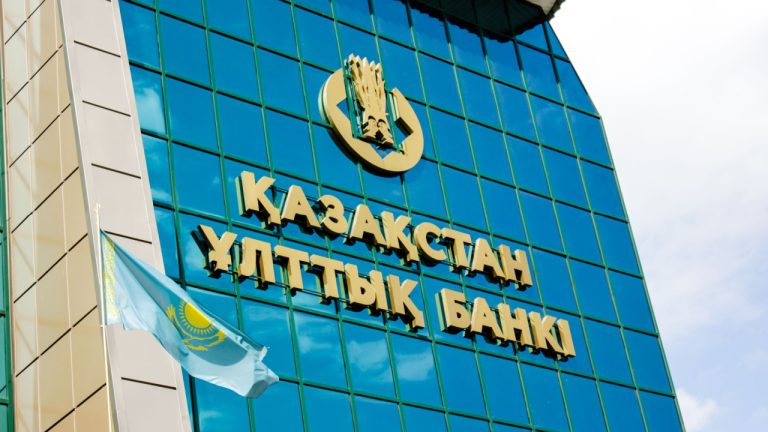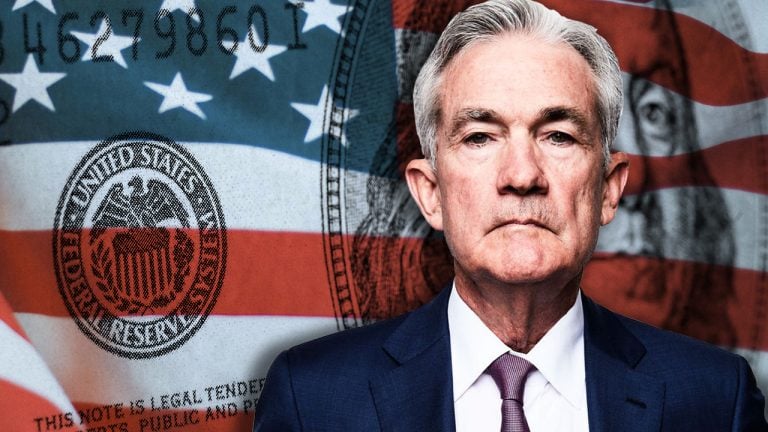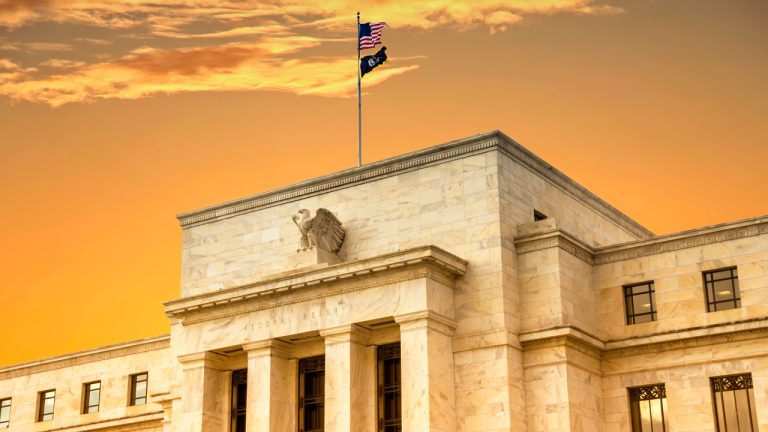 The central bank of Kazakhstan intends to use Binance’s blockchain platform Bnb Chain for the deployment of its upcoming digital currency. The decision was made public on social media by Changpeng Zhao, the chief executive of the global crypto exchange which was recently licensed to work in the country. Kazakhstan to Employ Binance Blockchain Infrastructure […]
The central bank of Kazakhstan intends to use Binance’s blockchain platform Bnb Chain for the deployment of its upcoming digital currency. The decision was made public on social media by Changpeng Zhao, the chief executive of the global crypto exchange which was recently licensed to work in the country. Kazakhstan to Employ Binance Blockchain Infrastructure […]
Officials in Kazakhstan continue their close relationship with Binance, as the National Bank plans to integrate its CBDC on the BNB Chain.
In an announcement on Twitter, Changpeng Zhao, the founder and CEO of Binance, said the network will be a major component of Kazakhstan’s latest Web3 endeavor.
The Binance founder tweeted that the National Bank of Kazakhstan (NBK) will integrate its central bank digital currency (CBDC), the digital tenge, on the BNB Chain, the underlying blockchain of the Binance network.
National Bank of Kazakhstan (NKB) will integrate their CBDC on @BNBchain. #BNB https://t.co/33WMKwAczm
— CZ Binance (@cz_binance) October 27, 2022
The NBK launched a CBDC pilot which included the participation of local merchants and consumers. Zhao said he looks forward to the bank further developing use cases to “bridge the gap between traditional banking and the crypto ecosystem.”
This development is one of many in the network’s effort to push crypto adoption, particularly in Kazakhstan. Back in August of this year, Binance was given its in-principle approval to operate as a digital asset service provider in Kazakhstan.
Less than a month later, on Oct. 6, the Kazakh Financial Services Authority granted Binance a permanent license to offer digital asset services and provide custody services. It was around this time that Binance also signed a memorandum of understanding with local authorities in an effort to help fight financial crime.
The Binance ecosystem, including its founder, has been vocal about its mission to push crypto adoption around the world. Recently it has engaged in crypto-related activities in Ukraine by hosting an NFT collection of a local museum at risk due to the conflict, along with opening two new offices in Brazil, one of Latin America’s major crypto hubs.
Related: SWIFT says it has reached a ‘breakthrough’ in recent CBDC experiments
Kazakhstan’s CBDC pilot program is among the country’s recent activities in the crypto space.
On Sept. 28, President Kassym-Jomart Tokayev said Kazakhstan is inching closer to legalizing methods to convert cryptocurrencies to cash, along with full legal recognition. This statement came after the country introduced new crypto mining tax regulations over the summer.
Recent data on global crypto mining revealed that Kazakhstan is among the world’s top three destinations for Bitcoin (BTC) mining, after the United States and China.

Crypto service providers should not provide any credit facility or accept payments from credit cards from their customers, the MAS suggested.
The Monetary Authority of Singapore (MAS) is introducing proposals to better regulate the cryptocurrency industry in the aftermath of the bankruptcy of the Singaporean crypto hedge fund Three Arrows Capital (3AC).
The central bank of Singapore has issued two consultation papers on proposals for regulating the operations of digital payment token service providers (DPTSP) and stablecoin issuers under the Payment Services Act.
Published on Oct. 26, both consultation papers aim to reduce risks to consumers from crypto trading and improve standards of stablecoin-related transactions.
The first document includes proposals for digital payment token (DPT) services or services related to major cryptocurrencies like Bitcoin (BTC), Ether (ETH) or XRP (XRP).
According to the authority, “any form of credit or leverage in the trading of DPTs” would result in the “magnification of losses,” potentially leading to bigger losses than a customer’s investment.
In section 3.20, MAS proposed to ban DPTSPs from providing retail customers with “any credit facility,” whether in the form of fiat currencies or crypto. According to the regulator, crypto service providers should also not be allowed to accept any deposits made using credit cards in exchange for crypto services.
“MAS proposes that DPTSPs should ensure that customers’ assets are segregated from the DPTSPs’ own assets, and held for the benefit of the customer,” the central bank noted, referring to the recent failure of several firms in the crypto industry, including 3AC’s insolvency in June.
Other than that, the MAS also suggested that DPTSPs should consider adopting consumer tests to assess retail customers’ knowledge of risks associated with crypto.
The second consultation paper provides proposals for a regulatory approach for stablecoins in Singapore, providing a set of business and operational requirements for stablecoin issuers.
In the section 4.21 of the document, MAS proposed to restrict stablecoin issuers from lending or staking single-currency pegged stablecoins (SCS), as well as from lending or trading other cryptocurrencies.
“This is to ring fence and mitigate risks to the SCS issuer in lieu of a comprehensive risk-based capital regime. Such activities can still be conducted from other related entities,” the consultation paper reads.
The regulator also proposed to introduce a minimum base capital of $1 million or 50% of annual operating expenses of the SCS issuer. The capital should be held at all times and include liquid assets, MAS added.
Related: HK and Singapore’s mega-rich are eyeing crypto investments: KPMG
The regulator invited interested parties to submit their comments on the proposals by Dec. 21, 2022.
As previously reported, the crypto winter of 2022 has become particularly harmful for cryptocurrency lenders as many such firms became unable to pay out their obligations due to a massive market drop. Some Bitcoin analysts are confident that crypto lending can still survive this bear market but they need to solve issues related to short-term assets and short-term liabilities.

With less than 0.5% adoption, the central bank of Nigeria is struggling to push its eNaira CBDC to its citizens.
Nigeria’s central bank digital currency (CBDC) is not getting the warm reception expected from its crypto-savvy population.
According to a Bloomberg report, less than 0.5% of Nigeria’s 217 million population are using the government-issued digital currency — the eNaira — a year after its launch.
This comes despite Nigeria being identified by Chainalysis as the top country in Africa for crypto adoption and ranking 11th globally, while a KuCoin report found that 35% of the Nigerian population aged 18 to 60 had owned or traded cryptocurrencies this year.
Bloomberg noted that Nigerians have been confused due to a lack of clarity from the state which cracked down on crypto last year.
In February 2021, the Central Bank of Nigeria banned banks from servicing crypto exchanges in an effort to sever fiat on and off ramps.
Educating people who are generally wary of the state and ruling elite has also become a challenge for the central bank, according to the report.
The #Nigerian eNaira is a central bank digital currency (CBDC) that launched 1 year ago, however only 0,5% of Nigerians are using it.
— Crypto Rand (@crypto_rand) October 25, 2022
According to TripleA, more than 10% of the population own #Crypto.
Nigerians want Crypto, but they don't want Government backed Crypto. pic.twitter.com/WaM8nmHxRg
Furthermore, the naira has been devalued around six times since 2015 and economists expect a further 20% loss in value next year, as the economy has been further compounded by galloping inflation, which could make the push for a CBDC a hard sell to many of the country's citizens.
According to the director at Lagos-based emerging and frontier markets investment bank Renaissance Capital, Adesoji Solanke, “the eNaira does not address any of these basic use cases, so no surprise at its low adoption rates so far.”
The disappointing figures are now prompting the Nigerian central bank to ramp up efforts to increase its adoption, including offering a 5% discount to drivers and passengers of motorized rickshaws that ply the city streets, according to the report.
Related: Nigeria becomes the most crypto-obsessed nation after April crash
In August, Nigerian Central Bank governor Godwin Emefiele announced the eNaira project entered its second phase in August with an adoption target of eight million users.
At the time, he added that the CBDC has had about 840,000 downloads, with about 270,000 active wallets. By August there had been around 200,000 transactions worth 4 billion nairas — approximately $9.5 million at the time.
According to the Atlantic Council’s CBDC tracker, Nigeria is one of eleven countries to have fully deployed a central bank digital currency, the other ten are in the Caribbean.
 While the U.S. Federal Reserve ramped up the benchmark bank rate with a barrage of rate hikes, U.S. Treasury markets and global bond markets, in general, have seen one of the worst selloffs in over a decade. The Fed’s actions has fueled criticism toward the U.S. central bank as some strategists believe the onslaught of […]
While the U.S. Federal Reserve ramped up the benchmark bank rate with a barrage of rate hikes, U.S. Treasury markets and global bond markets, in general, have seen one of the worst selloffs in over a decade. The Fed’s actions has fueled criticism toward the U.S. central bank as some strategists believe the onslaught of […] Financial authorities in Hong Kong have unveiled a prototype of the Chinese autonomous territory’s own central bank digital currency called Project Aurum. The two-tier platform features a wholesale interbank and a retail e-wallet system, participants revealed. Hong Kong to Issue Retail Tokens and Stablecoins as Part of Project Aurum A collaboration between the BIS Innovation […]
Financial authorities in Hong Kong have unveiled a prototype of the Chinese autonomous territory’s own central bank digital currency called Project Aurum. The two-tier platform features a wholesale interbank and a retail e-wallet system, participants revealed. Hong Kong to Issue Retail Tokens and Stablecoins as Part of Project Aurum A collaboration between the BIS Innovation […] According to recent reports close to central bank officials, the U.S. Federal Reserve will likely deliver another interest rate hike by roughly 75 basis points (bps) next month. Moreover, markets are predicting another rise by three-quarters of a point, and CME’s Fedwatch Tool indicates there’s a near-certain (98%) chance the central bank will choose a […]
According to recent reports close to central bank officials, the U.S. Federal Reserve will likely deliver another interest rate hike by roughly 75 basis points (bps) next month. Moreover, markets are predicting another rise by three-quarters of a point, and CME’s Fedwatch Tool indicates there’s a near-certain (98%) chance the central bank will choose a […]
FDIC insurance is highly sought-after by crypto exchanges, lenders, and other service providers. Is it the key to mass adoption?
Over the years, several cryptocurrency companies have claimed that deposits with them were insured by the United States Federal Reserve and the Federal Deposit Insurance Corporation (FDIC) as if they were regular savings accounts. While so far, no crypto firm has been able to offer depositors this type of insurance, some speculate it could be the key to mass adoption.
The most notable case is that of bankrupt lender Voyager Digital, which saw regulators instruct it to remove “false and misleading statements” regarding FDIC insurance. Crypto exchange FTX has been a beacon of hope looking to backstop contagion in the cryptocurrency industry, but it received a cease-and-desist letter from the FDIC to stop suggesting user funds on the platform were insured.
As it stands, even major players in the cryptocurrency space aren’t FDIC-insured. Coinbase, for example, details on its pages that it carries insurance against losses from theft but is not an FDIC-insured bank and that cryptocurrency is “not insured or guaranteed by or subject to the protections” of the FDIC or Securities Investor Protection Corporation (SIPC).
The exchange, however, points out that “to the extent U.S. customer funds are held as cash, they are maintained in pooled custodial accounts at one or more banks insured by the FDIC.” Speaking to Cointelegraph on the subject, a Coinbase spokesperson only said she can confirm “that Coinbase is aligned with the latest FDIC guidance.”
So what is FDIC insurance, why is it so sought-after in the cryptocurrency industry and why does it remain so elusive?
The FDIC itself was created amid the Great Depression in 1933 to boost the financial system’s stability following a wave of bank failures during the 1920s and has managed to protect depositors ever since.
FDIC insurance refers to the insurance provided by this agency that safeguards customer deposits in the event of bank failures. Cal Evans, managing associate at blockchain legal services firm Gresham International, told Cointelegraph:
“FDIC insurance is basically a layer of protection that covers one individual for up to $250,000 and its a backing that’s given by the United States government. It says ‘look, if this company goes bankrupt, we will guarantee your account to the value of $250,000 per person, per company.’”
So, if an FDIC-insured financial institution fails to meet its obligations to customers, the FDIC pays these amounts to depositors up to the assured amount while assuming the bank and selling its assets to pay off owed debt. It is worth noting that FDIC insurance does not cover investments like mutual funds.
Other countries have similar schemes, with deposits in the European Union being guaranteed up to $98,000 (100,000 euros) to protect against bank failures, for example. These schemes improve confidence in the financial system.
Speaking to Cointelegraph, Noah Buxton, a partner and practice leader for blockchain and digital assets at consulting firm Armanino, said, “No customer’s crypto holdings are FDIC-insured today,” but added that crypto platforms often hold customers’ dollar balances in financial institutions that are FDIC-insured.
There is a distinct difference between users having their funds insured, and the impact of a cryptocurrency firm having FDIC insurance — even for only United States dollar deposits — is hard to estimate.
If the FDIC were to insure deposits at a cryptocurrency platform, it would likely gain an advantage over other U.S.-based cryptocurrency platforms, as the perceived security of that platform would gain a huge boost, especially as it would be seen as a green flag from regulators as well.
Recent: Tech’s good intentions and why Satoshi’s new ‘social order’ foundered
Evans said that the FDIC would give the retail market “a lot more confidence because if FDIC insurance does happen and does apply to these companies, that means it’s going to massively, massively encourage people who are in the United States to put their money in crypto because it’s as secure as putting dollars at a bank,” adding:
“It’s going to massively help adoption, because it’s going to encourage the retail market to see companies like this at a parallel, in term of safety, with banks that people know.”
Mila Wild, marketing manager at cryptocurrency exchange ChangeHero, told Cointelegraph that one of the biggest problems the cryptocurrency sector faces is a lack of regulation and supervision, especially after the collapse of the Terra ecosystem “undermined the confidence of many investors.”
Per Wild, the FDIC doesn’t just insure customer deposits, as it also “conducts constant monitoring of financial institutions for security and compliance with consumer protection requirements.”
Dion Guillaume, global head of PR and communication at crypto exchange Gate.io, told Cointelegraph that a “friendly crypto regulatory environment would be critical for adoption,” as “blind regulatory sanctions” do not help. Guillaume added that insuring digital assets can be very different and several factors need to be carefully considered.
As the FDIC could significantly boost confidence in the industry and several large exchanges have shown interest in getting it, it’s important to look at how hard it is for a cryptocurrency-native firm to actually become FDIC-insured.
Evans told Cointelegraph that it’s “actually relatively straightforward to get” as long as specific criteria are met by the organization looking to get it. The organization needs to make necessary applications and prove requisite liquidity and could potentially have to detail its management structure.
To Evans, FDIC insurance would “massively give companies operating in the United States a huge, huge benefit over foreign firms,” as U.S. residents who open accounts with insured firms would have a major incentive not to use decentralized exchanges or other peer-to-peer platforms.
Wild had a more negative stance, saying it’s “not possible to get FDIC insurance,” as it only covers “deposits held in insured banks and savings associations and protects against losses caused by the bankruptcy of these insured deposit institutions.” Wild added:
“Even if we imagine that crypto projects will be able to have FDIC insurance someday, it means sacrificing decentralization as one of the core crypto values.”
She further claimed that the FDIC’s statements on dealings with crypto firms are “trying to infringe on crypto companies and emphasize their perceived negative impact on society.” Wild concluded that the FDIC telling crypto projects not to suggest they’re insured “could further lower” trust in cryptocurrencies.
To Wild, cryptocurrencies will remain a riskier asset for the time being, as users won’t have any type of government protection. As a result, crypto users should “stay vigilant about their assets.” This does not mean fiat savings are safer, she said, as increasing inflation is eating those away.
Noah Buxton, a partner at consulting firm Armanino, went into more detail on the process, telling Cointelegraph that platforms attaining FDIC insurance would “require a modified underwriting regime, the creation of which has many significant hurdles.”
He said the FDIC would need to figure out how to take possession of crypto assets, how to value them and how to distribute them to the customers of failed crypto platforms, adding:
“While this is possible and may happen, we are more likely to see private insurance and reinsurance vehicles fill the void for the foreseeable future. This is a necessary component of any market and the broader coverage availability and competitive set of insurance options will benefit crypto holders.”
If users are, in the future, able to get insurance through other sources — such as private company solutions or decentralized protocols — it’s worth questioning whether FDIC insurance is worth it in the long run. Insurance from the FDIC could be a significant centralizing factor, as most would likely move to a platform that has its backing.
Evans said he believes FDIC insurance “is not necessarily wanted or needed,” as wherever there’s more protection, “there happens to be more oversight and regulation,” which would mean insured companies would be “very secure and very regulated.”
These regulations could further restrict those who are able to create accounts with these companies, which would add to the question of centralization that the crypto insurance industry already faces.
Bitcoin Foundation chairman Brock Pierce told Cointelegraph that the crypto industry will nevertheless “see more companies try to get it” after the recent wave of crypto lenders going under, which will make it “even harder for them now.”
Pierce did not expect FDIC insurance to “be a big deal or matter much with regards to overall crypto adoption.” Whether it impacts cryptocurrency adoption at all may only be clear once/if the FDIC does insure cryptocurrency deposits.
Recent: ‘The social benefits are huge’: Web3 gaming to shift digital ownership
It’s worth noting that FDIC insurance may bring in a false sense of security. While no bank depositor has lost their funds since the FDIC was launched, its reserve fund isn’t fully funded. The FDIC, according to Investopedia, is “normally short of its total insurance exposure by more than 99%.”
The FDIC has, at times, borrowed money from the U.S. Treasury in the form of short-term loans. Self-custody may, for the experienced cryptocurrency investor, continue being a viable option, even if a crypto firm is one day FDIC insured.
 This week researchers from the Bank of Canada published the central bank’s Financial System Review which highlights five key statistics tethered to Canadian bitcoin owners. According to the Bank of Canada’s metrics, 13% of Canadians own the leading crypto asset bitcoin, and “most Canadians are aware of bitcoin.” Bank of Canada’s Financial System Review Highlights […]
This week researchers from the Bank of Canada published the central bank’s Financial System Review which highlights five key statistics tethered to Canadian bitcoin owners. According to the Bank of Canada’s metrics, 13% of Canadians own the leading crypto asset bitcoin, and “most Canadians are aware of bitcoin.” Bank of Canada’s Financial System Review Highlights […] Spending with China’s state-issued digital currency has surpassed 100 billion yuan, close to $14 billion, by the end of August, the country’s monetary authority revealed. More than 5 million merchants now accept the digital yuan in 15 Chinese regions as Beijing continues to expand the pilot areas. People’s Bank of China Reports 360 Million Digital […]
Spending with China’s state-issued digital currency has surpassed 100 billion yuan, close to $14 billion, by the end of August, the country’s monetary authority revealed. More than 5 million merchants now accept the digital yuan in 15 Chinese regions as Beijing continues to expand the pilot areas. People’s Bank of China Reports 360 Million Digital […]